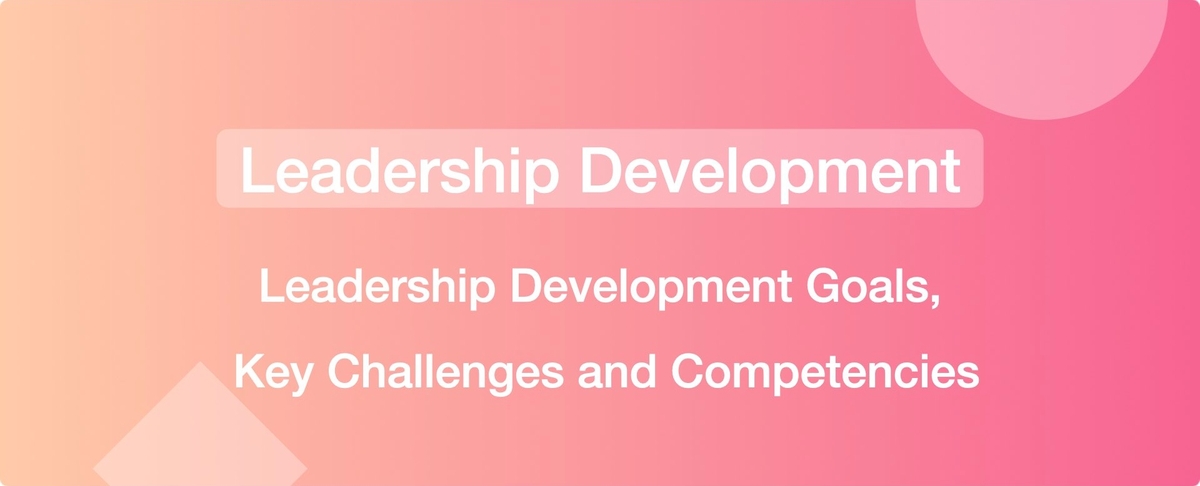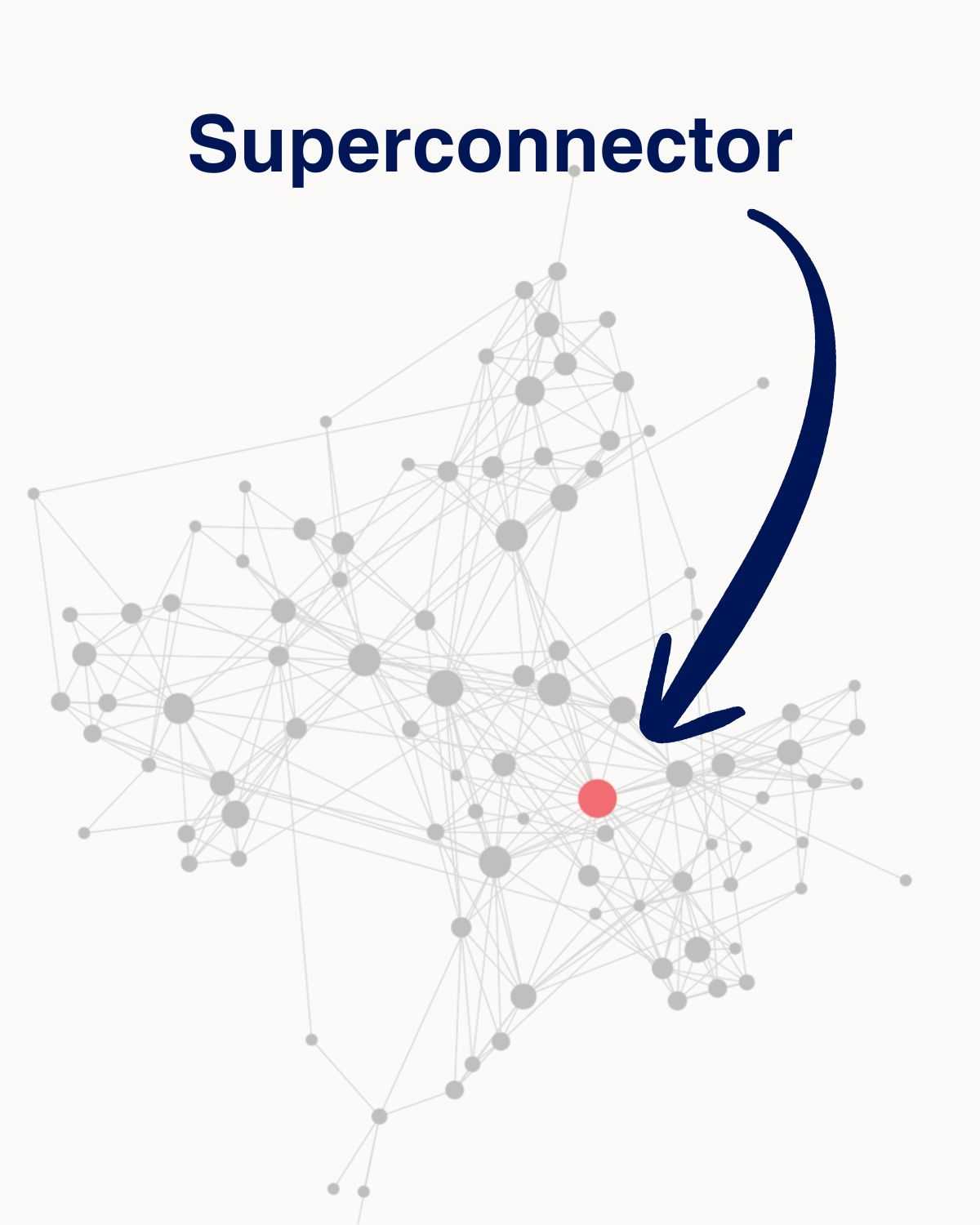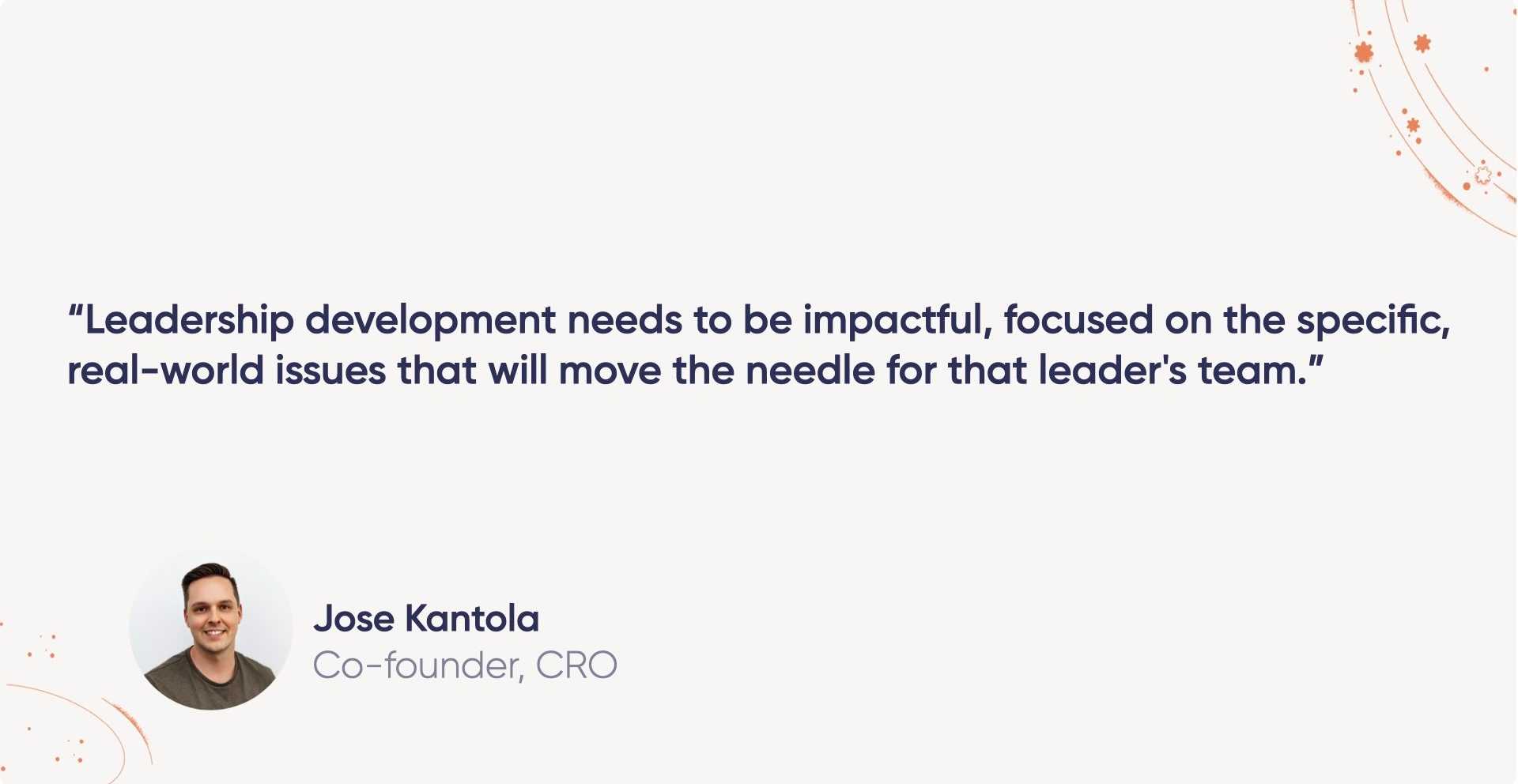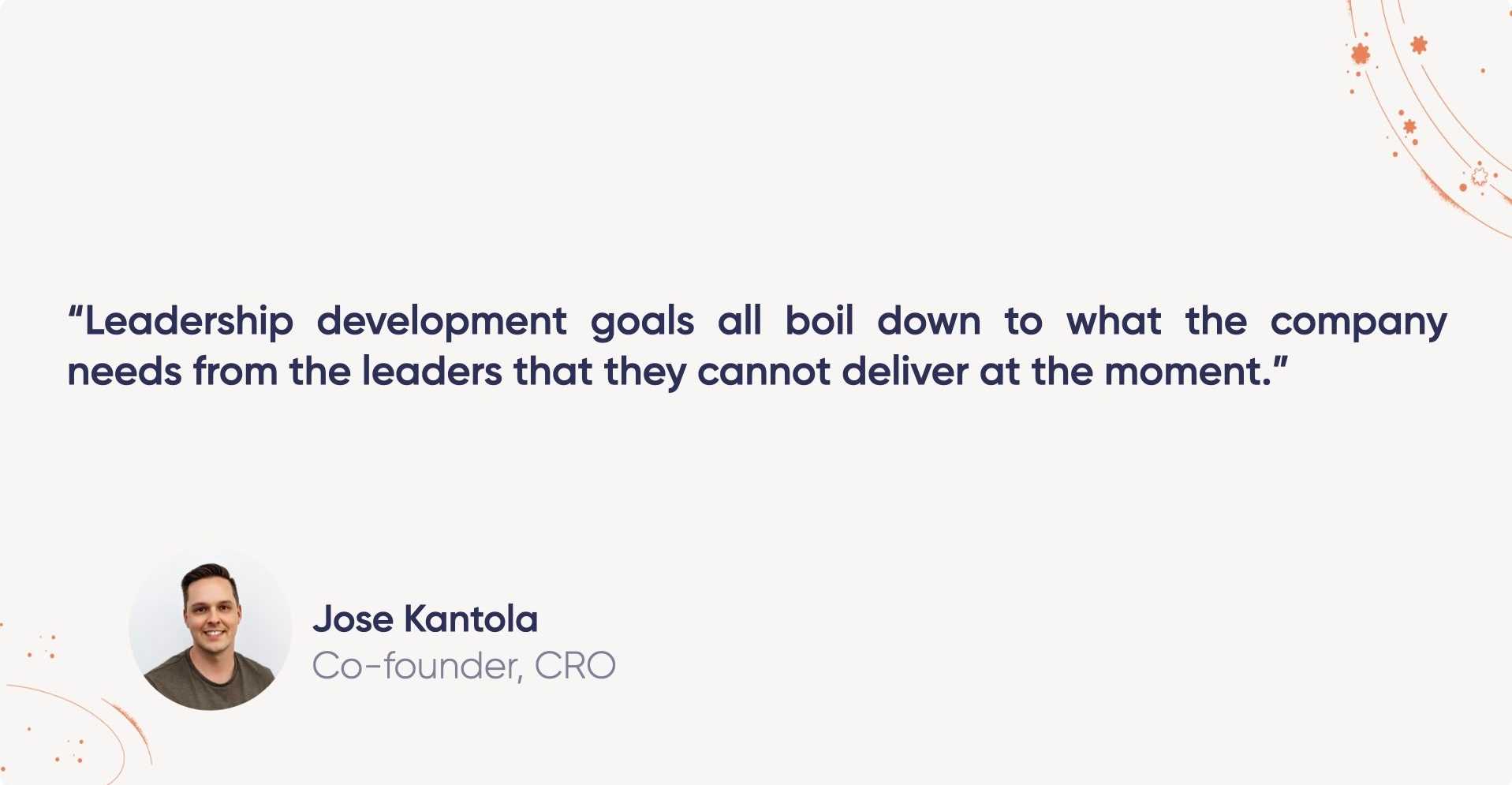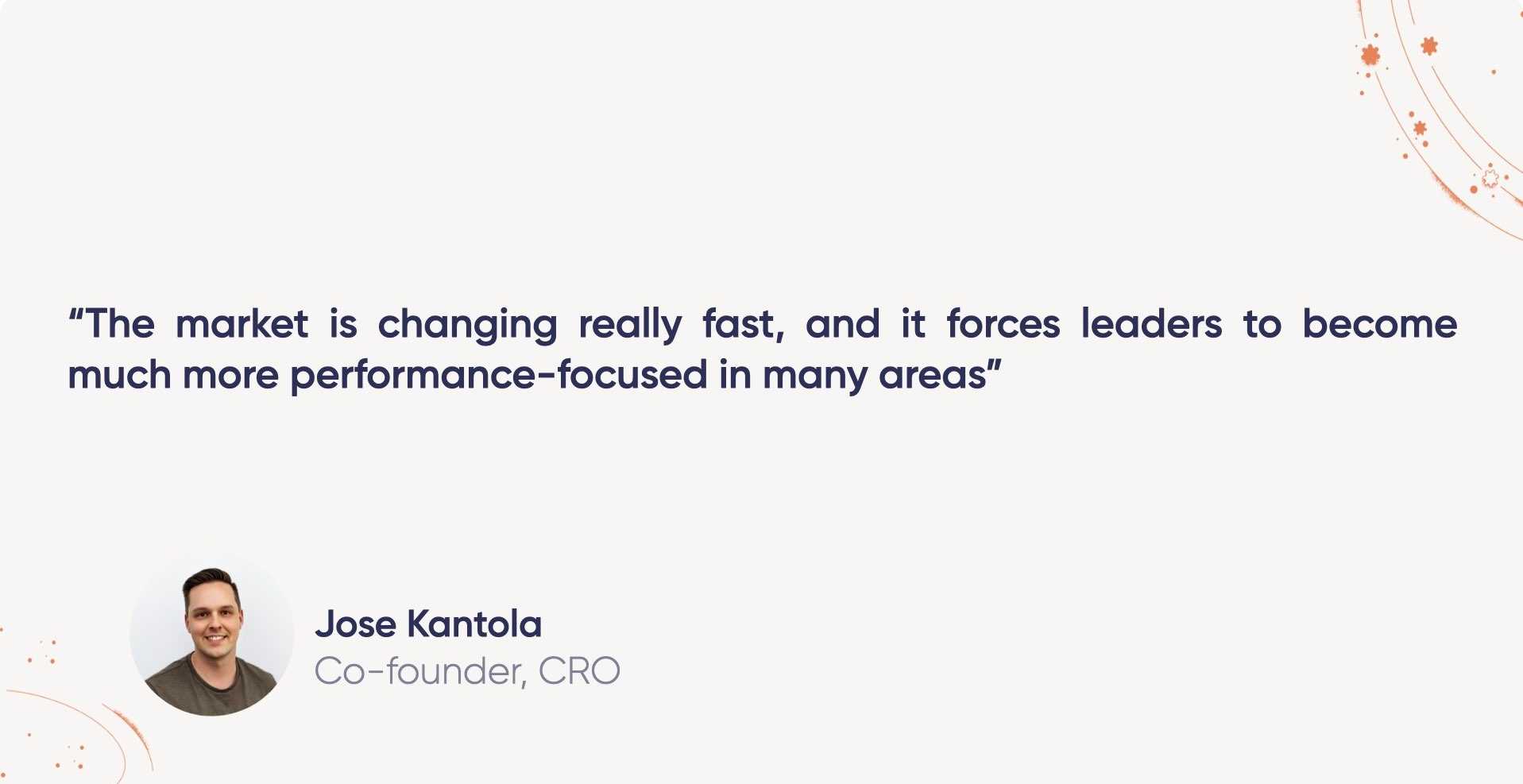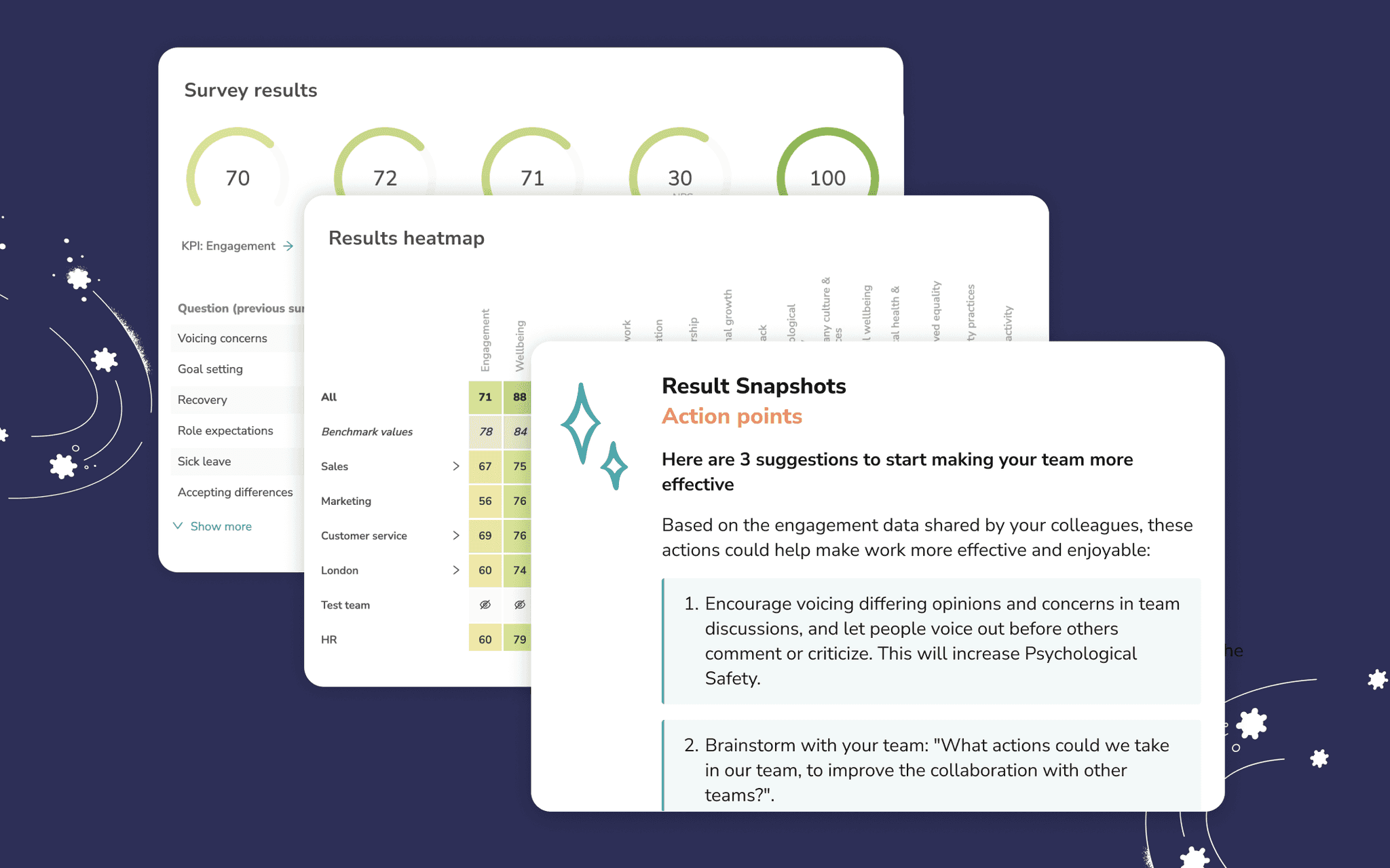When I started managing my first team of five people, I thought leadership was about having all the answers. By the time I'd scaled that team to over 100 employees across multiple countries, I realized leadership is actually about asking the right questions and developing the right capabilities.
Setting leadership development goals became one of my most important responsibilities. Not just for myself, but for every manager in my organization.
The challenge? Most companies set vague goals like "strengthen team communication" or "improve team performance." These don't work. They're too broad, too unmeasurable, and too disconnected from what leaders actually face every day.
In this article, I'll share what I've learned about setting leadership development goals that actually drive results.
What Are Leadership Development Goals?
Leadership development goals are specific, measurable targets that help leaders build the skills and behaviors they need to be effective in their roles.
These goals bridge the gap between where a leader is now and where they need to be.
Good leadership development goals are:
- Tied to real business challenges
- Specific enough to measure progress
- Relevant to the leader's current situation
- Achievable within a reasonable timeframe
For example, instead of "improve communication skills," a better goal might be "conduct weekly one-on-one meetings with each direct report and gather feedback on clarity of priorities."
The second goal is specific, measurable, and addresses a real need.
Explore Leadership Enablement
Turn insights into action with Teamspective's Leadership Enablement solution.
Areas of Leadership Development Goals
Through my experience scaling teams, I've seen leadership development goals fall into several key areas:
Performance Management
Goals in this area focus on helping leaders drive results through their teams.
Examples include:
- Conducting monthly performance reviews instead of annual ones
- Having difficult conversations about underperformance within two weeks of identifying issues
- Setting clear, measurable goals for each team member
- Providing regular, specific feedback
When I scaled my team, performance management became critical. Leaders needed to shift from being doers to being enablers of performance in others.
Team Development
These goals focus on growing the capabilities of the entire team.
They might include:
- Identifying skill gaps and creating development plans for each team member
- Delegating high-impact projects to develop others
- Creating opportunities for team members to learn from each other
- Building succession plans for key roles
I learned that great leaders build teams that can deliver results without them.
Communication and Collaboration
Goals here address how leaders share information and work across boundaries.
Examples include:
- Establishing regular communication rhythms with the team
- Building relationships with leaders in other departments
- Breaking down silos between teams
- Creating psychological safety for team members to speak up
As my organization grew, collaboration became harder. Leaders who excelled at this became more valuable than those who only managed their own teams well.
Strategic Thinking
These goals help leaders see the bigger picture and align their work accordingly.
They might include:
- Connecting team goals to the company strategy in every team meeting
- Identifying opportunities for innovation or improvement
- Making decisions based on long-term impact, not just short-term results
- Understanding market trends that affect the business
Early in my career, I was purely tactical, focused almost exclusively on execution. Learning to think strategically made me a better leader, as I started to connect my team’s efforts to a bigger picture and greater impact.
Emotional Intelligence
Goals in this area focus on how leaders understand and manage themselves.
Examples include:
- Seeking feedback from direct reports quarterly
- Identifying personal triggers and developing strategies to manage them
- Adapting leadership style based on team members' needs
- Recognizing and addressing personal biases
This might be the hardest area to develop. But it makes the biggest difference in leadership effectiveness.
Data-Driven Decision Making
These goals help leaders base decisions on evidence rather than gut feel.
They might include:
- Using engagement survey data to prioritize team development areas
- Tracking key metrics for the team and reviewing them weekly
- Accepting feedback that challenges personal assumptions
- Making decisions based on multiple data sources, not just anecdotal evidence
I've seen too many leaders dismiss data because it didn't match their perceptions. The best leaders use data to test and refine their understanding.
Key Challenges in Leadership Development Today
Setting good goals is only part of the challenge. Here are the obstacles I've observed in my own experience and when helping our customers enable their leaders:
Ensuring Impact
The biggest challenge is making sure leadership development actually makes a difference.
Companies have limited resources. They can't provide personal support to every leader for every situation. Yet leaders face increasingly complex challenges that require specific, timely guidance.
The pressure to maintain profitability while competing in fast-changing markets means leadership has become more performance-focused. Leaders need to make harder decisions and have more difficult conversations.
Generic training programs don't prepare leaders for these real-world challenges. Development needs to be impactful, focused on the specific issues that will move the needle for that leader's team.
Maintaining Relevance
The second major challenge is relevance.
If I'm struggling with a low-performing employee on my team, training me on how to run team-building activities isn't helpful. It might even frustrate me because it's not addressing my immediate need.
But in another team, culture-building might be exactly what that leader needs.
Every leader has a different situation. Different team dynamics, different performance challenges, different levels of experience. Development that's relevant for one leader might be completely irrelevant for another.
The challenge is being agile enough to provide each leader with development that matters to them, right now.
Balancing Resources with Personalization
Related to both impact and relevance is the resource challenge.
Ideally, every leader would have a personal coach who understands their unique situation and provides tailored guidance. But that's not realistic for most organizations.
The challenge is finding ways to personalize development without requiring massive resources. How do you give leaders what they need without breaking the budget?
Competing Priorities
Leaders are overwhelmed. They're focused on delivering results, managing their teams, attending meetings, and handling day-to-day issues.
Adding leadership development to that list often feels like one more burden. Unless the development directly helps them with what they're already struggling with, they won't engage with it.
The challenge is making development feel like support.
The Most Important Leadership Competencies in 2026 and Beyond
Based on what I'm seeing across companies and industries, two leadership competencies stand out as critical:
Driving Performance
Companies are facing growing pressure to maintain profitability and compete in rapidly changing markets. This creates a need for leaders who can consistently drive performance.
But driving performance looks different from what it used to.
Right now it’s all about:
- Setting clear expectations and removing obstacles
- Having honest conversations about what's working and what's not
- Making decisions quickly based on data
- Holding team members accountable while supporting their development
- Balancing short-term results with long-term sustainability
I've seen this shift accelerate in recent years. Whatever initiatives companies run, they're competing for leaders' time. Leaders are expected to be more performance-focused than ever before.
The competency isn't just about getting results yourself. It's about enabling your team to perform at a high level consistently.
Building Effective Collaboration
The second critical competency is leading teams that collaborate effectively, both internally and with other teams.
This keeps coming up in employee engagement surveys as a repeating bottleneck across companies. Collaboration takes effort to establish, and it needs to be actively renewed when situations and priorities change.
Many companies are lagging here. It falls on leaders to navigate and fix collaboration issues.
Effective collaboration requires leaders who can:
- Break down silos between teams and departments
- Create connections across organizational boundaries
- Align their team's work with other teams' priorities
- Navigate conflicts and competing interests
- Build relationships with peers in other functions
As organizations grow, collaboration becomes harder. Teams develop their own cultures and ways of working. Information gets trapped in silos. Handoffs between teams break down.
Leaders who can bridge these gaps become incredibly valuable.
These two competencies are connected. When times are harder or resources are limited, inefficiencies get exposed. Leaders need to drive performance while also ensuring their teams work well with others.
How Technology Can Help in Achieving Leadership Development Goals
Technology has the potential to change how companies approach leadership development. Here's what actually works:
Real-Time Data for Better Decisions
Leadership enablement platforms analyze multiple data sources (engagement surveys, performance metrics, collaboration patterns) to identify what each leader should focus on.
Instead of annual reviews that look backward, leaders get current insights about their teams. This allows them to address issues while they're still small.
For example, the platform might flag that team engagement dropped suddenly or that confusion about priorities increased in the past two weeks. The leader can respond immediately instead of discovering the problem months later.
Personalized, Relevant Guidance
When you have data about a leader's experience, team size, performance results, and engagement scores, you can identify the most impactful improvements they could make right now.
With tools like Teamspective, the platform automatically prioritizes issues and opportunities. It helps the leader focus on topics that will make the biggest difference.
Then it provides tailored recommendations:
- Specific discussion points for one-on-one meetings
- Questions to ask in team meetings
- Coaching aligned with company leadership principles
- Resources relevant to the current challenge
This guidance is based on the leader's team and situation.
Support for Performance Conversations
One of the hardest leadership competencies is having difficult conversations about performance.
Technology can help by:
- Providing data that makes the conversation more objective
- Suggesting specific talking points based on team feedback
- Offering frameworks for structuring the conversation
- Tracking whether performance improves after the conversation
This doesn't replace the leader's judgment. But it gives them tools to approach these conversations more confidently.
Continuous Learning Instead of One-Time Training
Traditional training happens once. You attend a workshop, then go back to your regular work.
Technology enables continuous development. Leaders receive relevant coaching and resources exactly when they need them.
This approach recognizes that leadership challenges change constantly. What you need help with this month might be completely different from next month.
Reduced Administrative Burden
Platforms that integrate with tools like Slack or Microsoft Teams make gathering feedback seamless.
Instead of scheduling surveys, sending reminders, and compiling results, the process happens automatically. A survey becomes just another message that takes 30 seconds to answer.
Response rates increase because there's no friction. And leaders get insights faster, while they're still relevant.
<embed to Danfoss’ customer story video>
Conclusion
Setting leadership development goals used to feel like a box-checking exercise. Write down some vague aspirations, file them away, and forget about them until the next review cycle.
After scaling my team to 600 people across multiple countries, I learned that that approach doesn't work, nor scale. Leadership development goals need to be specific, relevant, and tied to real challenges. They need to focus on the competencies that actually matter, driving performance and building collaboration.
Technology has made this possible in ways that weren't available when I started leading teams. Platforms can provide real-time insights, personalized guidance, and continuous support at scale.
Book a demo today and see how Teamspective can help your leaders drive performance and build collaboration across your organization.

